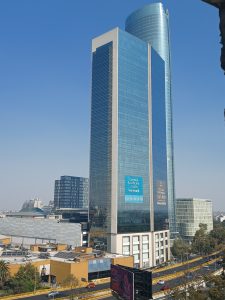Unless dramatic steps are taken, one of the world’s largest cities could face “Day Zero” — when supplies of water run so low that government must begin rationing the precious liquid — as early as 2028.
Many residents of the working-class barrio of Azcapotzalco, in the northwestern part of Mexico City, had a very dry Christmas this year. Water stopped flowing to many households on Christmas Day, allegedly the result of an outage of three power stations in an electrical substation that provides power to wells in the neighborhood. Representatives of Mexico City’s Sacmex Water System said the situation would be resolved in a matter of hours. In the end, it took ten days, and only after local residents had forced the issue, in classic Mexican fashion, by blocking key roads in the neighborhood.
“They told us they were going to bring us water tankers and that the service would be fully restored the day after,” Paty Pérez, a resident of the area, told the daily newspaper Excelsior. “It is impossible for us to live without water. Azcapotzalco is one of the municipalities that always lacks water; there are elderly people who live on the fourth floor of their buildings who have to carry the water up the stairs.
It is not just poor neighborhoods that are feeling the effects of Mexico City’s worsening water crisis. Whenever my Mexican wife and I come to her native city (where we are at the moment), we stay in a 13th-floor apartment on the edge of the leafy, colorful middle-class barrio of Coyoacan, which is home not only to the Museo de Frida Kahlo but also the former home of Leon Trotsky, both well worth a visit. The apartment belongs to a generous, gregarious septuagenarian Argentinean emigree whom my wife regards as an adopted aunt.
She and her neighbors are also having problems with water. At any moment, particularly in Spring, the supply can suddenly run dry and may not return for a number of hours or even until the next day. This has been happening for many years but it began occurring a lot more frequently when work began, in 2012, on a giant skyscraper complex a few blocks away called Complejo Mitikah. The complex features two office towers, one owned by We Work, both of which are overshadowed by Mitikah tower, a 67-floor apartment building that, once finished, will be Mexico City’s largest residential skyscraper.

The complex is billed as a fully self-contained “vertical city” that will include a giant shopping mall, a supermarket, a private hospital, gyms, swimming pools, banks, bars and restaurants. If the skyscraper’s residents, many of whom will no doubt work from home, would rather not venture out into the city, they won’t have to; just about everything they could possibly want or need is on site.
Naturally, the complex has massively increased the demand for water in the local neighborhood, but it is other local residents that are paying the price. More and more often, the underground water tanks that serve nearby residential buildings are running dry. This is particularly true in Springtime, just before Mexico’s rainy season begins. It can take hours or in extreme cases even days before water tankers arrive to refill the tanks. On public holidays or over long weekends the government can sometimes cut off water to residents in order to carry out much-needed maintenance work.
CLICK HERE FOR FULL ARTICLE ON NAKED CAPITALISM
Source: NAKED CAPITALISM
TYT Newsroom



